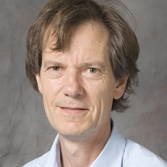
Programme
Monday, September 19
Venue: Minerva Building, Siltavuorenpenger 5 A, Room K21312.45 - 13.00: Opening of the workshop: Jorma Rissanen
13.00 - 14.00: Plenary Talk: Andrew Barron
14.00 - 15.30: Set 1:
15.30 - 16.00: Coffee break
- Sami Kaski: Multiple Output Regression with Latent Noise
- Jukka Corander: 100 years after William Bateson - what can we learn about epistasis by today's statistical machine learning?
- David R. Bickel: Mean minimax redundancy and other measures of evidence for composite hypotheses
16.00 - 17.30: Set 2:19.00 - 21:30: Welcoming Reception at Restaurant Suomenlinnan Panimo
- Jean Honorio: On the Sample Complexity of Learning Sparse Graphical Games
- Prasad Santhanam: Data derived estimation in slow mixing Markov processes and applications to community detection
- Paavo Nevalainen: Heuristicallly targeted Minimum Description Length test for stone detection from public point cloud data
Tuesday, September 20
Aurora Building, Siltavuorenpenger 10, Auditorium 22909.00 - 09.30: Coffee break
09.30 - 11.00: Set 3:11.00 - 13.00: Lunch
- Peter Grünwald: Safe Testing: an alternative for p-value- and Bayes factor-based hypothesis testing with repercussions for the MDL Principle
- Marc Boullé: Revisiting enumerative two-part crude MDL for Bernoulli and multinomial distributions
- Kohei Miyaguchi: Stochastic Complexity for Sparse Modeling
13.00 - 14.30: Set 4:
14.30 - 15.00: Coffee break
- Tjalling Tjalkens: Feature based models: deciding on dependency, irrelevance, and redundancy
- Joe Suzuki: Jeffreys' and BDeu Priors for Model Selection
- Kenji Yamanishi: Stochastic complexity for latent variable models
15.00 - 17.00: Set 5:
18.30: Banquet Dinner at Restaurant Savu
- Ryota Tomioka: Quantized Stochastic Gradient Descent: Communication versus Convergence
- Kazuho Watanabe: Rate-distortion theoretic views of learning problems
- Tara Javidi: Active Learning from Imperfect Labelers
- Ralf Eggeling: Pruning Rules for Learning Parsimonious Context Trees
Wednesday, September 21
Before lunch: Aurora Building, Siltavuorenpenger 10, Auditorium 229After lunch: Athena Building, Siltavuorenpenger 3 A, Room 302
09.00 - 09.30: Coffee break
09.30 - 10.30: Plenary Talk: John Shawe-Taylor
10.30 - 11.30: Plenary Talk: Wojciech Szpankowski
11.30 - 13.30: Lunch
13.30 - 15.00: Set 6:
15.00 - 15.30: Coffee break
- Tomi Silander: Bayesian network structure learning with a quotient normalized maximum likelihood criterion
- Boris Ryabko: Two-Faced Processes and Pseudorandom Number Generators
- Ivo Grosse: The entropic hourglass of animal and plant embryogenesis
15.30 - 17.00: Set 7:
- Michael Mahoney: Sub-sampled Second-order Newton Methods for Large-scale Machine Learning
- Ioan Tabus: Sparse modelling using information theoretic structure selection
- Dmitri Pavlichin: Chained Kullback-Leibler Divergences
Invited speakers (confirmed):
- Dmitri Pavlichin, Stanford, USA
- David R. Bickel, University of Ottawa, Canada
- Ivo Grosse, Martin-Luther-Universität Halle-Wittenberg, Germany
- Jean Honorio, Purdue, USA
- Ryota Tomioka, Microsoft Research Cambridge, England
- Kenji Yamanishi, University of Tokyo, Japan
- Ioan Tabus, Tampere University of Technology, Finland
- Joe Suzuki, Osaka University, Japan
- Marc Boullé, Orange Labs, France
- Ralf Eggeling, University of Helsinki, Finland
- Kazuho Watanabe, Toyohashi University of Technology, Japan
- Tjalling Tjalkens, Eindhoven University of Technology, the Netherlands
- Peter Grünwald, Centrum voor Wiskunde en Informatica, the Netherlands
- Jukka Corander, University of Oslo, Norway
- Kohei Miyaguchi, University of Tokyo, Japan
- Samuel Kaski, Aalto University, Finland
- Boris Ryabko, Institute of Computational Technologies of the SB RAS, Russia
- Tara Javidi, UC San Diego, USA
- Narayana Santhanam, University of Hawaii at Manoa, USA
- Tomi Silander, Xerox Research Centre Europe, France
- Michael Mahoney, UC Berkeley, USA
- Paavo Nevalainen, University of Turku, Finland
Plenary speakers
Andrew Barron, Yale:
Probability Models for Normalized Maximum Likelihood Calculation

- Abstract: We show how a probability model in which the counts are independent with probability function $p(k)$ proportional to the Stirling ratio $k^k e^{-k} /k!$ produces exactly the Normalized Maximum Likelihood (NML) Shtarkov distribution upon conditioning on the total counts. This Stirling ratio distribution leads to clean and fast algorithms for computing the conditional distributions needed for arithmetic coding of data according to the NML. Also, it allows for simple computation of the Shtarkov constant analogous to what was obtained by Petri Kontkanen and Petri Myllymaki (2005). Bayes mixtures with possibly negative weights (Barron, Roos, Watanabe 2014) provide an alternative method of computing the joint and conditional Shtarkov distribution. However, the Stirling ratio method is superior when the alphabet size is large. This is joint work with Xiao Grace Yang.
John Shawe-Taylor, University College London:
Learning to Detect an Immune Response from T-Cell Sequences

- Abstract: Adaptive immunity can be viewed as a computational system that learns to respond to different pathogens. The response results in changes in the frequencies of T-Cells. The problem of detecting this response requires detecting these changes. The information is distributed across many different T-cells and an approach using Fisher kernels to highlight the relevant features is presented. Links between Fisher kernels and string kernels from finite state automata suggest extensions to Fisher kernel feature sets that allow biologically significant features to be extracted efficiently.
Wojciech Szpankowski, Purdue:
Analytic Pattern Matching: From DNA to Twitter

- Abstract: Repeated patterns and related phenomena in words
are known to play a central role in many facets of
computer science, telecommunications, coding, data compression,
data mining, and molecular biology.
One of the most fundamental questions arising in such studies
is the frequency of pattern occurrences in a given string known as the
text. Applications of these results include
gene finding in biology, executing and analyzing tree-like
protocols for multiaccess systems, discovering repeated strings in
Lempel-Ziv schemes and other data compression algorithms,
evaluating string complexity and its randomness,
synchronization codes, user searching in wireless communications,
and detecting the signatures of an attacker in intrusion detection.
In this talk after a brief motivation, we review several pattern matching problems
(e.g., exact string matching, constrained pattern matching, generalized
pattern matching, and subsequence pattern matching), and then we discuss
a few applications (e.g., spike trains of neuronal data, Google search,
Lempel-Ziv'77 and Lempel-Ziv'78 data compression schemes,
and string complexity used in Twitter classification). Finally,
we illustrate our approach to solve these problems using tools of
analytic combinatorics, which we discuss in some depth.
We also present several open problems.
